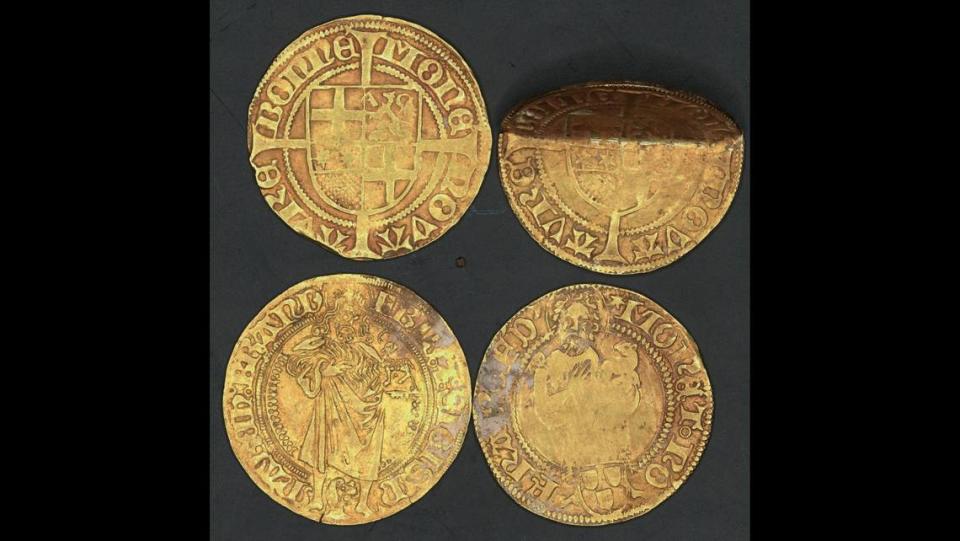Someone hid a ‘small fortune’ 500 years ago and never returned. It was just discovered
Amid banging and shouting, a man grabs a handful of gold coins and hides them as fast as he can. He only has a few minutes until rebel farmers burst through the doors of the monastery, and he needs to stow away his fortune before they arrive.
Or at least that’s what experts think happened in 1525 when a member of Himmelpforte monastery in Germany hid four gold coins of “enormous value” — and never came back for them.
The coins are only one part of a trove of artifacts discovered during a recent excavation at the monastery, according to a news release from the State Office for Heritage Management and Archaeology Saxony-Anhalt, which is leading the project.
Here’s what archaeologists have uncovered at the site.
Coins of ‘enormous value’
The four gold coins were minted at various times in different places, according to archaeologists.

Among the “small fortune” was a coin of the Roman-German Emperor Frederick III that was minted in Frankfurt before 1493, a coin of the princes Frederick of Brandenburg-Ansbach and Sigismund of Brandenburg-Kulmbach that was made near Nuremberg sometime between 1486 and 1495 and two coins from the Archdiocese of Cologne that were minted in Bonn in 1480 or 1481.
Some of the coins were heavily worn, experts said.
‘Exciting’ artifacts from the 13th-16th centuries
A collection of other artifacts was also discovered in the ruins of the monastery. Experts said they used metal detectors to help them search the site.
Archaeologists unearthed finds from the 13th through 16th centuries that “bear witness to everyday life, the economy, trade and the prosperity of the monastic community,” according to the state office.
The finds include brass book clasps from the monastery’s library, a writing stylus, ceramics, animal bones, knives, horseshoes, various tools and a lock fragment, the state office said. There were also decorated cloth seals made of lead, indicating large-scale trade took place.
Weapons were also discovered at the site, experts said. The end of a 14th-century knight’s sword and a “short slashing weapon” from the 15th century were among the weapons uncovered.
Experts said the discoveries will give greater insight into monastic life at Himmelpforte and will also provide more context about life in Germany during the Middle Ages and Reformation.
Germany’s Peasants’ War
Between 1524 and 1525, there was a peasant uprising in Germany, according to Britannica. Known as the Peasants’ War, peasants and farmers rebelled against nobility, demanding greater rights and freedom from oppression.
As part of their rebellion, farmers stormed and looted the Himmelpforte monastery in 1525, experts said.
Before that, the monastery had been operating for nearly 300 years, the state office said. In that time, it functioned as an important religious, cultural and economic center.
The monastery is located near Wernigerode, about 150 miles southwest of Berlin.
‘Rather mysterious’ 1,050-year-old structure unearthed in Germany. What is it?
Medieval pendant buried in dump for 600 years may hold saint’s bones, German study says
Evidence of uprising against Nazis is found in the ruins of Warsaw ghetto, experts say

